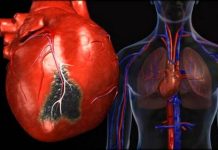It looks as though COVID-19 is abating again. According to The Hill, “The spike in coronavirus infections from the delta variant of the virus is slowing and cases are beginning to decline. Experts think the U.S. could be on the back end of the wave, even as deaths and hospitalizations remain high.” More importantly, the deadliness of the pandemic may be easing up. Dr. Eric Topol of Scripps Research wrote last week, “The number of new daily cases in the United States has fallen 35% since Sept. 1. Worldwide, cases have also dropped more than 30% since late August. This is as good as the world has looked in many months.”
The way the virus works through the population, in ebbs and flows, has been a fairly consistent pattern according to David Leonhardt of the New York Times. “These declines are consistent with a pattern that readers will recognize: COVID’s mysterious two-month cycle. Since the COVID virus began spreading in late 2019, cases have often surged for about two months — sometimes because of a variant, such as delta — and then declined for about two months,” Leonhardt contends.

Source: radio.foxnews.com
Leonhardt points out that public health officials are somewhat unsure of why this wax and wane dynamic occurs in approximately 2-month bursts. Leonhardt argues “The most plausible explanations involve some combination of virus biology and social networks. Perhaps each virus variant is especially likely to infect some people but not others — and once many of the most vulnerable have been exposed, the virus recedes. And perhaps a variant needs about two months to circulate through an average-sized community.”
However, the overall picture seems to be a bit more complex than that. Part of what’s complicating our understanding is how asymptomatic people function in the spread of the virus. Initially, it was assumed that asymptomatic people were unlikely to be spreaders of the SARS-CoV-2.
However, recent evidence points to the idea that they may now play a central role. As UC Health Today explains, “Nearly 40% of children ages 6 to 13 tested positive for COVID-19, but were asymptomatic, according to just-published research from the Duke University BRAVE Kids study” adding, “While the children had no symptoms of COVID-19, they had the same viral load of SARS-CoV-2 in their nasal areas, meaning that asymptomatic children had the same capacity to spread the virus compared to others who had symptoms of COVID-19.”
The Duke study corroborates studies from Iceland and Singapore that came to similar conclusions. This is most likely due to the fact that the Delta variant, the virus currently dominating the landscape, is much more transmissible than its predecessors. As Quartz reported, “People infected with the delta variant have more than 1,000 times the viral load—the concentration of viral particles in the body—than those with the original strain found in China, a group of scientists has reported in a preprint paper.”
Moreover, the Delta variant develops in our bodies more quickly, which makes it more readily available to spread to other people. According to PBS, the Delta variant “has an incubation period of four days, rather than six, making people contagious sooner.”
However, even with the Delta variant, the pattern of spread is not so straightforward. In August, hot spots emerged mainly in southern states, especially the Gulf region. In September, the central pains states and the Pacific Northwest became problematic, so geography plays a role, but what role that it is still not completely clear.
One would expect population density to play a role. After all, it’s difficult to socially distance when people are packed in together tightly. That was one reason epidemiologists suspected the outbreak in New York, especially in the close quarters of nursing homes, so quickly got out of hand and led to so many hospitalizations and deaths. As epidemiologist Professor Christl Donnelly of Imperial College London points out, “The more dense the population, the more you would expect transmission to happen.”
Yet, even this seemingly common-sense notion is not always borne out. According to National Geographic, “some rural communities have become virus hot spots, and well-equipped cities such as Singapore had success in containing the virus – so generalizations are difficult.” It is likely a combination of factors such as vaccination rates, school attendance policies, the use of masking, and the adherence of social distancing policies, especially large gatherings, that affects transmission.
But even so, the data defies any specific conclusions. In fact, there are those who believe that the virus is far more independent than we recognize. “We’ve ascribed far too much human authority over the virus,” states Michael Osterholm, an infectious-disease expert at the University of Minnesota. This is bolstered by the fact that even with kids returning to school, the cases have been declining, which argues against the idea of proximity being the sole driver of transmission.
This concept of viral autonomy, if you will, is in keeping with other studies. For example, the study Characterization of SARS-CoV-2 worldwide transmission based on evolutionary dynamics and specific viral mutations in the spike protein found that “The SARS-CoV-2 evolution appears to facilitate its transmission via altering the affinity to ACE2 or immune evasion.” In plain speak, the virus evolves in a manner that allows it to invade as many hosts as possible, thereby ensuring its survival through further transmission.
Furthermore, the 2-month pattern appears as though it is global in nature. As Leonhardt writes,” The pattern has also been evident within countries, including India, Indonesia, Thailand, Britain, France and Spain. In each of them, the delta variant led to a surge in cases lasting somewhere from 1 1/2 to 2 1/2 months.” The reality, however, is that we are just beginning to understand the patterns behind COVID-19 transmission.
Still, given the complex nature of the virus, especially its ability to mutate, along with wide variances of human behavior across the globe, and patterns may be more regional in nature. This is why one study which used time-associated balloon charts with multiple epidemiological indicators found that “different geographic locations around the world exhibited different epidemic characteristics.”
Regardless of the spikes in infection that may or may not happen in the future, the overall picture is looking more positive. The CDC reports that more than 50 % of the U.S. population age 12 and older is fully vaccinated, while 76% of people 12 and older have had at least 1 shot. Additionally, both monoclonal antibodies as well as new antiviral medication, molnupiravir, made by Merck & Co. and Ridgeback Biotherapeutics of Miami, offer the hope that people can be successfully treated for COVID-19 and avoid serious complications that force them to be hospitalized.
The convergence of a nearly fully vaccinated public along with promising treatments may not mean that that COVID-19 will disappear from our lives completely, but at least become a manageable threat, much like the common flu. Perhaps this is why Dr. Scott Gottleib, a former Food and Drug Administration commissioner and author of Uncontrolled Spread, a new book on COVID, states, “Barring something unexpected, I’m of the opinion that this is the last major wave of infection.”
Meanwhile, the biggest challenges are to keep up with the potential for future SARS-CoV-2 mutations and to find successful treatments for long haulers, the group of people who never fully recover from COVID-19 infections. Over time, this relatively small but statistically significant group of people are going to have a host of chronic conditions that will put stress on their personal and family finances, thus necessitating the need for public assistance in some cases.






